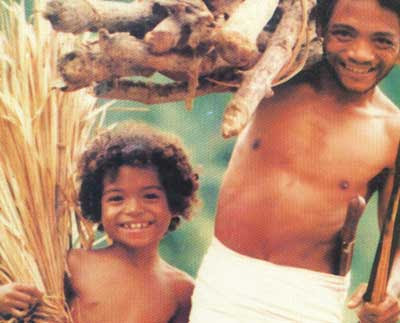The Life of Apolinario Mabini (1864-1903).
Posted by
jaed
Labels:
brains of revolution,
filipino hero,
filipino nationalist and theorist,
La Revolucion Filipina,
The Life of Apolinario Mabini,
The Philippine Revolution,
University of Santo Tomas
Filipino nationalist and theorist of the Philippine revolution against Spanish colonial rule. Born into a peasant family in Batangas, Luzon Island, Mabini worked as a teacher before graduating in law from the University of Santo Tomás in 1894. He practiced briefly as a lawyer before joining the nationalist movement, led by Emilio Aguinaldo, in 1896. In the same year he was crippled by poliomyelitis, which may have saved him from execution by the Spanish, who arrested him that year. Mabini became the “brains of the revolution.” His hope was, when the Spanish-American War broke out in 1898, the United States would help secure independence for the Philippines from Spanish rule. He cautioned Aguinaldo against making a hasty declaration of independence, although this advice was ignored and the declaration was made in June 1898. Inspired by the French and American revolutions, Mabini drafted a democratic constitution for the Philippines. His ideas were not, however, incorporated in the constitution adopted at Malolos in 1898. Mabini’s intention of giving strong powers to the executive was rejected by the wealthier supporters of independence. Nor were his ideas on the separation of church and state acceptable. Mabini’s hopes of abolishing lotteries, liquor, cock-fighting pits, and capital punishment (except for military insubordination) were also doomed.
Mabini was Aguinaldo’s chief adviser in 1898 and was appointed as the first prime minister of the independent republic early in 1899. He also served as Aguinaldo’s secretary of foreign affairs from 1898 to 1899 but his intransigent line towards the United States led to his fall in May 1899. The post of Chief Justice of the Supreme Court was offered to him later that year but never confirmed by Aguinaldo. Mabini was captured by the Americans late in 1899, jailed, and then exiled to Guam after refusing to take an oath of allegiance to the United States. While in exile he wrote La Revolucíon Filipina (The Philippine Revolution). In 1902 he accepted the U.S. oath and returned to the Philippines where he died of cholera in 1903. A Filipino Hero.
Mabini was Aguinaldo’s chief adviser in 1898 and was appointed as the first prime minister of the independent republic early in 1899. He also served as Aguinaldo’s secretary of foreign affairs from 1898 to 1899 but his intransigent line towards the United States led to his fall in May 1899. The post of Chief Justice of the Supreme Court was offered to him later that year but never confirmed by Aguinaldo. Mabini was captured by the Americans late in 1899, jailed, and then exiled to Guam after refusing to take an oath of allegiance to the United States. While in exile he wrote La Revolucíon Filipina (The Philippine Revolution). In 1902 he accepted the U.S. oath and returned to the Philippines where he died of cholera in 1903. A Filipino Hero.
Monday, December 15, 2008 | 0 Comments
Marriage and Family
Posted by
jaed
Labels:
barong,
Customs of Philippines,
kumpadrehan,
Marriage and family,
pineapple fiber
Most people marry before they are 30 years old. The groom and his family pay for the wedding ceremony and reception. The bride often does not see her bridal gown until the day she is married. Grooms often wear a barong, an embroidered shirt that hangs over the trousers, made of pineapple fiber. At the reception, during the newlyweds’ first dance, relatives may take turns clipping money to the groom’s shirt or the bride’s gown. Some couples live together instead of or before having a formal wedding.
Loyalty to the extended family is fundamental, as is the concept of mutual support and self-sacrifice when the family or a member of it needs help. The close-knit network of relationships even extends to honorary kinships, usually referred to as kumpadrehan or godparenthood. Particular respect is shown to more senior members of the family. Traditionally, the nuclear family has been large, often with four or more children, but today, particularly in urban areas, people are having fewer children. Many Filipinos work overseas to earn money for the extended family at home.
Source: Encarta
Source: Encarta
Sunday, December 14, 2008 | 0 Comments
About Filipino
Posted by
jaed
Labels:
About Filipino,
Filipino,
Filipinos,
Malayan Peoples
Filipinos are primarily descended from Malayan peoples who migrated to the islands thousands of years ago. During the past several centuries, a significant number of people have migrated from China. Some people of Spanish descent settled in the Philippines during the Spanish colonial period (1565-1898). The term Filipino originally described a person of Spanish descent born in the Philippines. In the 19th century it began to refer to the Christianized Malays who constituted the majority of the population. Although the term remains closely associated with this group, it also can describe any citizen of the Philippines.
Sunday, December 14, 2008 | 0 Comments
Subscribe to:
Comments (Atom)







